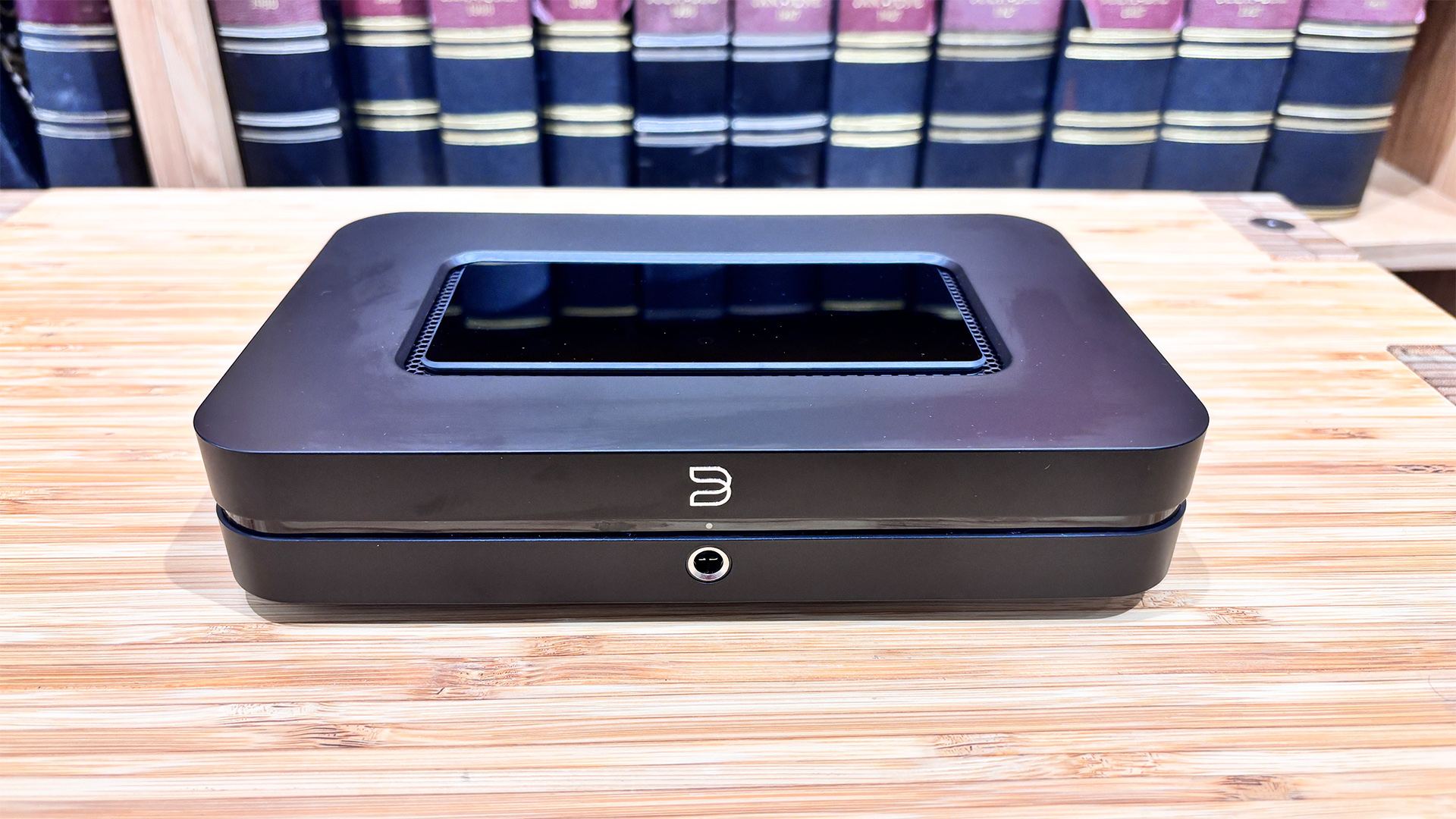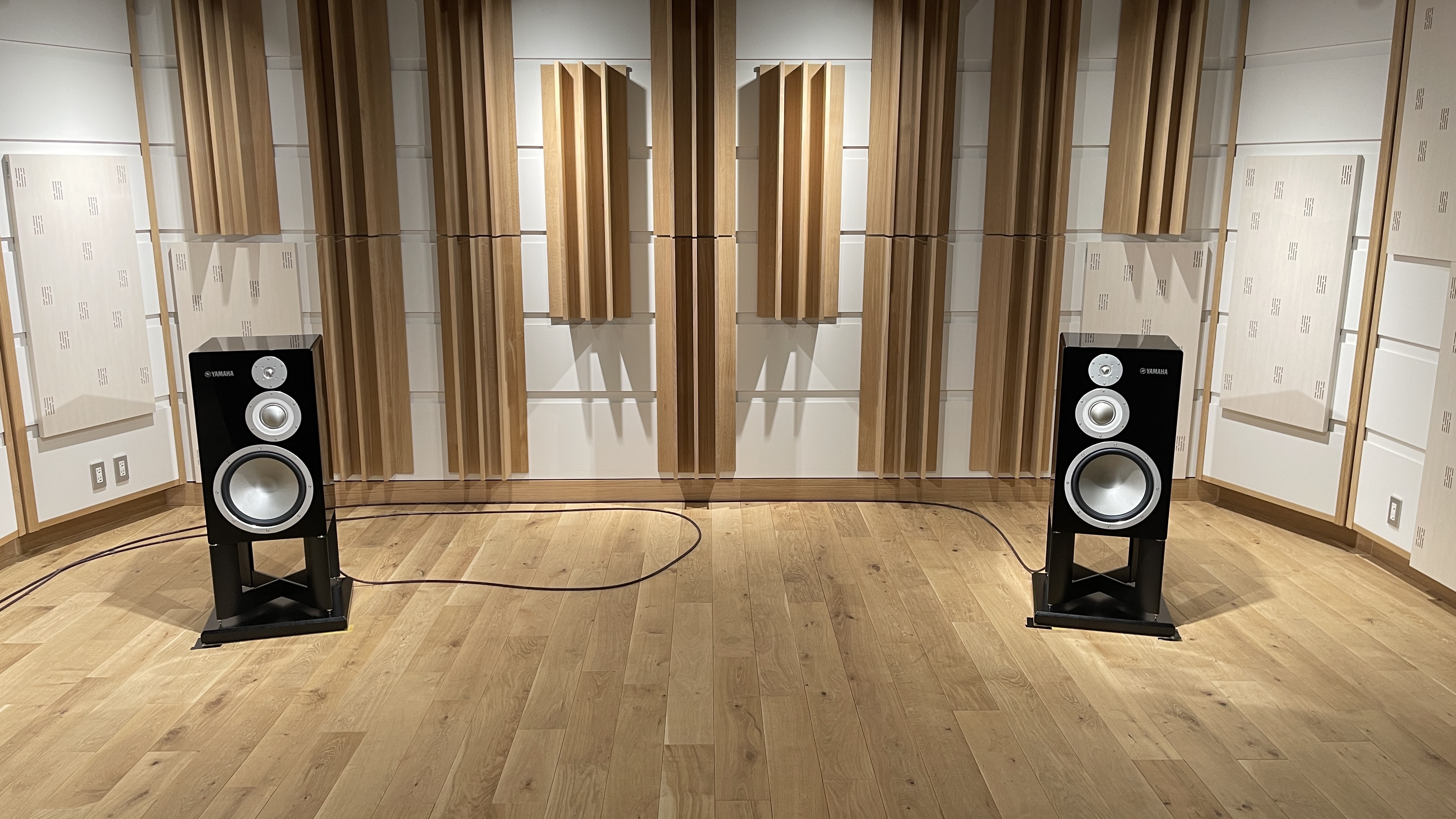What Hi-Fi? Verdict
While more musically engaging rivals may prevent it from returning to the top of the class, the Bluesound Node (2024) is an admirably controlled, balanced and easygoing performer
Pros
- +
Organised, easygoing sound with pleasing detail levels
- +
Neat, compact, appealing design
- +
Great streaming features and solid file compatibility
Cons
- -
Class-leading rivals deliver more sonic drama and drive
- -
Tough competition at this level
Why you can trust What Hi-Fi?
It’s a common theme in art and literature, from classical myths to modern novellas – that time waits for no man. No matter how great you might be and how high you may rise, there will always be something, or someone, to pull you back down to Earth just as you grow to your tallest, proudest peak. “There’s always a bigger fish,” to quote Liam Neeson in the decidedly un-literary Star Wars: Episode 1 – The Phantom Menace.
The world of hi-fi is no different. So often we’ve seen products dominate a corner of the market, only to be sideswiped by younger, better rivals keen for their turn at the metaphorical watering hole. Bluesound’s Node was almost synonymous with well-priced music streamers, with its third-generation iteration from 2021 earning multiple What Hi-Fi? Awards for its efforts. It seemed as though the good times would last forever, until the similarly-priced Cambridge Audio MXN10 (tested at £449 / $499 / AU$899) strode into the clearing and declared itself as a major new player in the budget network player arena.
Bluesound hasn’t taken such competition lightly. Roughly three years after the release of the original model, the Canada-based company is back with another Node in a bid to wrestle control back from the young Cambridge pretender. Let battle commence.
Build & design
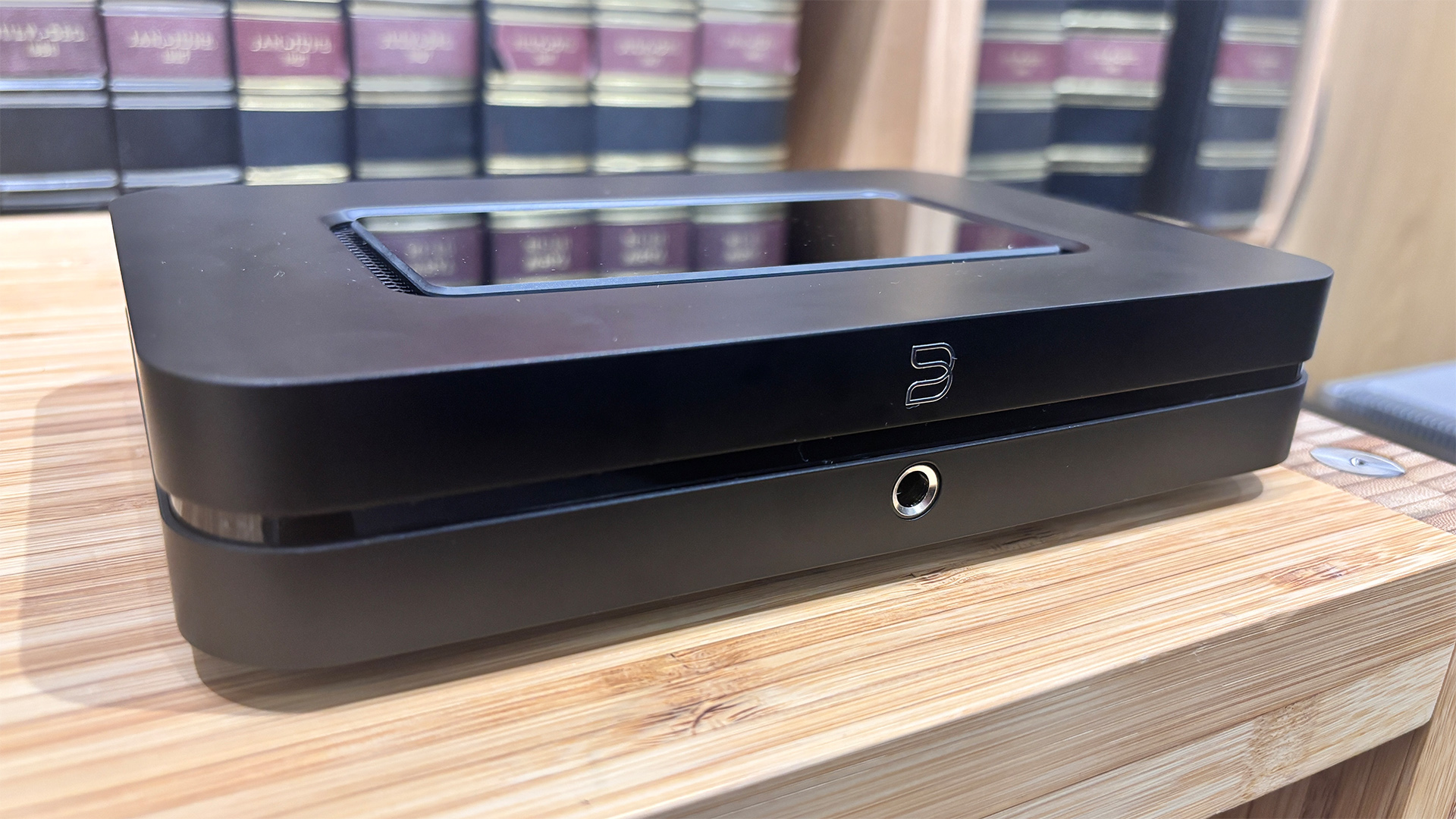
To look at and handle, the 2024 Node (internally known as the N132) music streamer is extremely similar to its 2021 predecessor (the N130). That’s no great shame, and while we can’t exactly find much to fault with this model’s compact, lightweight and undeniably pleasant design, some more demanding punters might have wanted some aesthetic evolution after a roughly four-year break between generations.
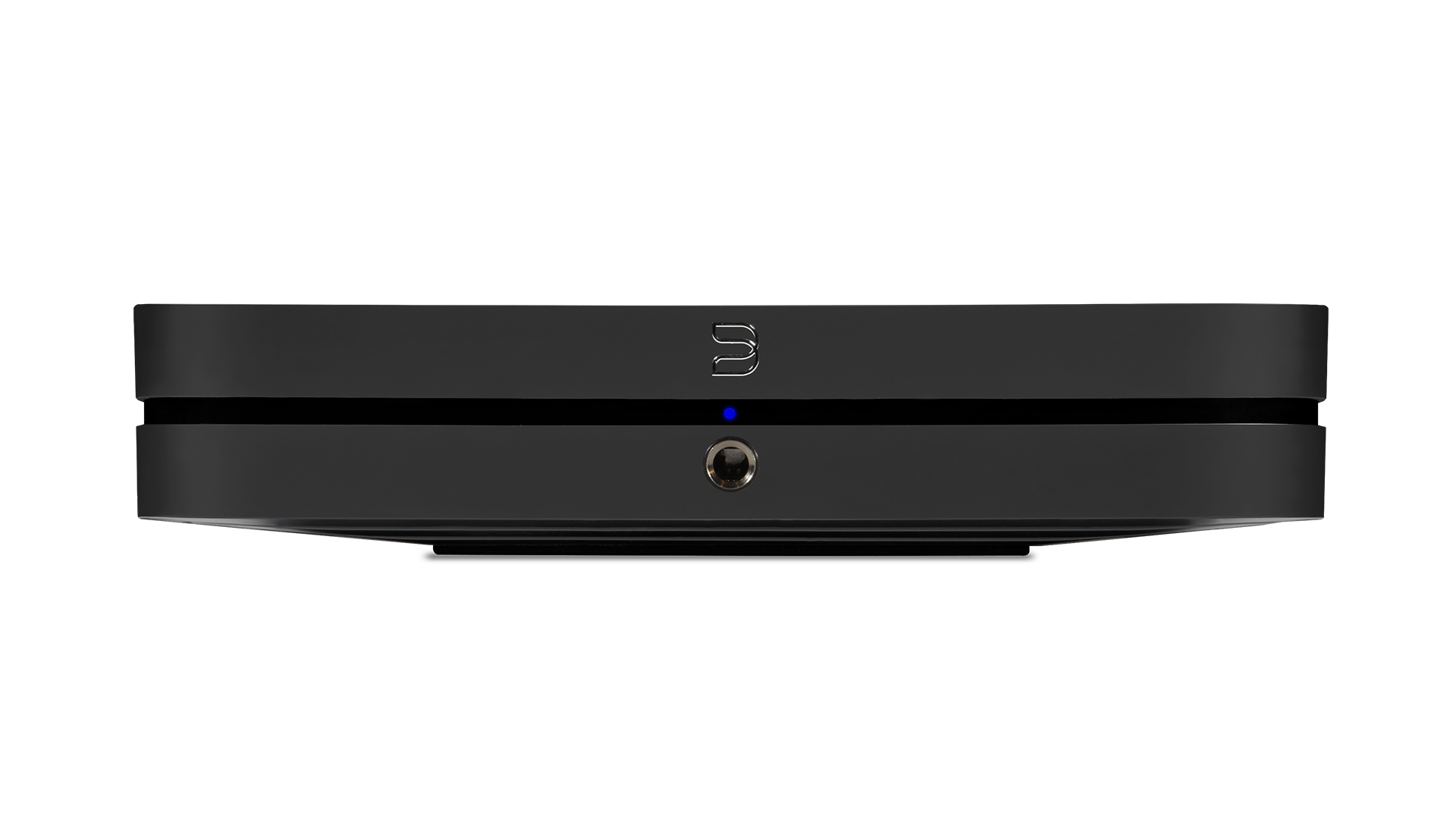
Streaming sources AirPlay 2, Spotify Connect, Tidal Connect, Amazon Music, Qobuz, Internet Radio, Bluetooth 5.2
Network Wi-fi, ethernet
Inputs Mini TOSLINK/3.5mm Stereo combo, HDMI eARC, USB-A (storage)
Outputs RCA, coaxial, optical, subwoofer, 3.5mm
Headphone output 6.3mm headphone output
Max file resolution 24-bit/192kHz PCM, DSD256
Dimensions (hwd) 4.6 x 22 x 14.6cm
Weight 1.1kg
There’s been so little change from one unit to the other, in fact, that we had to resist the urge simply to copy and paste our design paragraph from 2021 and take an early coffee break. The new Node’s compact chassis still holds up to apt comparisons with a small wireless router or a large hardback book, while that shiny touch-capacitive top panel returns with the same functionality as before, allowing you to adjust the volume via a pleasingly smooth slider, skip tracks or select from one of your five pre-allocated presets.
We made our wishes known in 2021 with the old model that Bluesound would add a proper screen display to the composition, but alas, no dice. In fairness to Bluesound, Cambridge hasn’t added a screen to its rival MXN10 music streamer, either. There’s also no supplied remote with the new Node, but considering that most of your control will be done using your smartphone and the accompanying BluOS app, that’s no reason to throw a tantrum.
Features
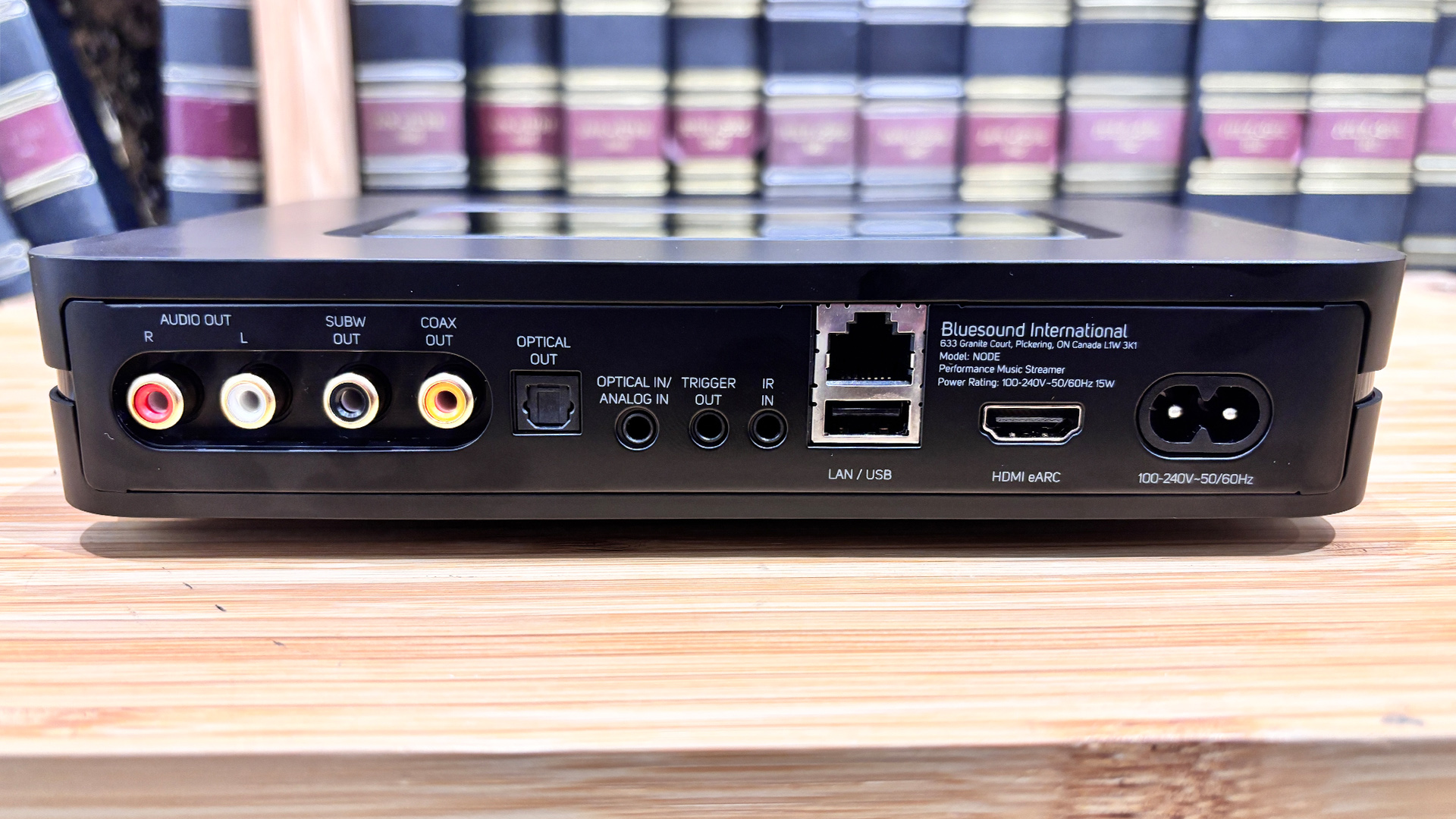
While the outside may look the same, this new Node now features an ES9039Q2M Sabre DAC at the heart of its digital circuitry, replacing the Texas Instruments PMC5242 unit of its predecessor, designed to deliver what Bluesound describes as "breathtaking dynamics and ultra-low distortion". The new Node incorporates a low-noise power module alongside improved internal circuitry to take its performance, theoretically at least, to the next level.
Bluesound's music streamer may be small, but it’s still bulging with modern-day smarts. As before, 2024’s Node uses the BluOS streaming platform at its heart, a stable piece of software that we find to be responsive, reasonably intuitive and nicely organised. The Bluesound offers wi-fi and ethernet connectivity, meaning that you can stream your hi-res digital music collection stored on the same network from connected laptops, hard drives or NAS drives.
The Node offers support for Amazon Music, Tidal Connect, Spotify Connect, Qobuz and various other streaming services and internet radio. Alongside that you have support for Apple AirPlay 2 and Bluetooth 5.2, though we’re a little sad to see a lack of Chromecast support. It’s able to handle a good deal of information, too, providing compatibility for hi-res files up to 24-bit/192kHz and DSD256.
Around the back, the Node features RCA, coaxial and optical outputs alongside a subwoofer out, and you’re also treated to IR, optical and HDMI eARC inputs for tethering various sources, including a TV, to your network player. That HDMI eARC input is a particular boon at this price, especially when compared with similarly-priced rivals that don’t offer such a useful benefit for your TV set-up. The new Node also features a 6.3mm headphone jack at the front which, when combined with the company’s THX AAA (Achromatic Audio Amplifier) headphone technology, promises “minimal distortion for exceptional clarity”.
Sound
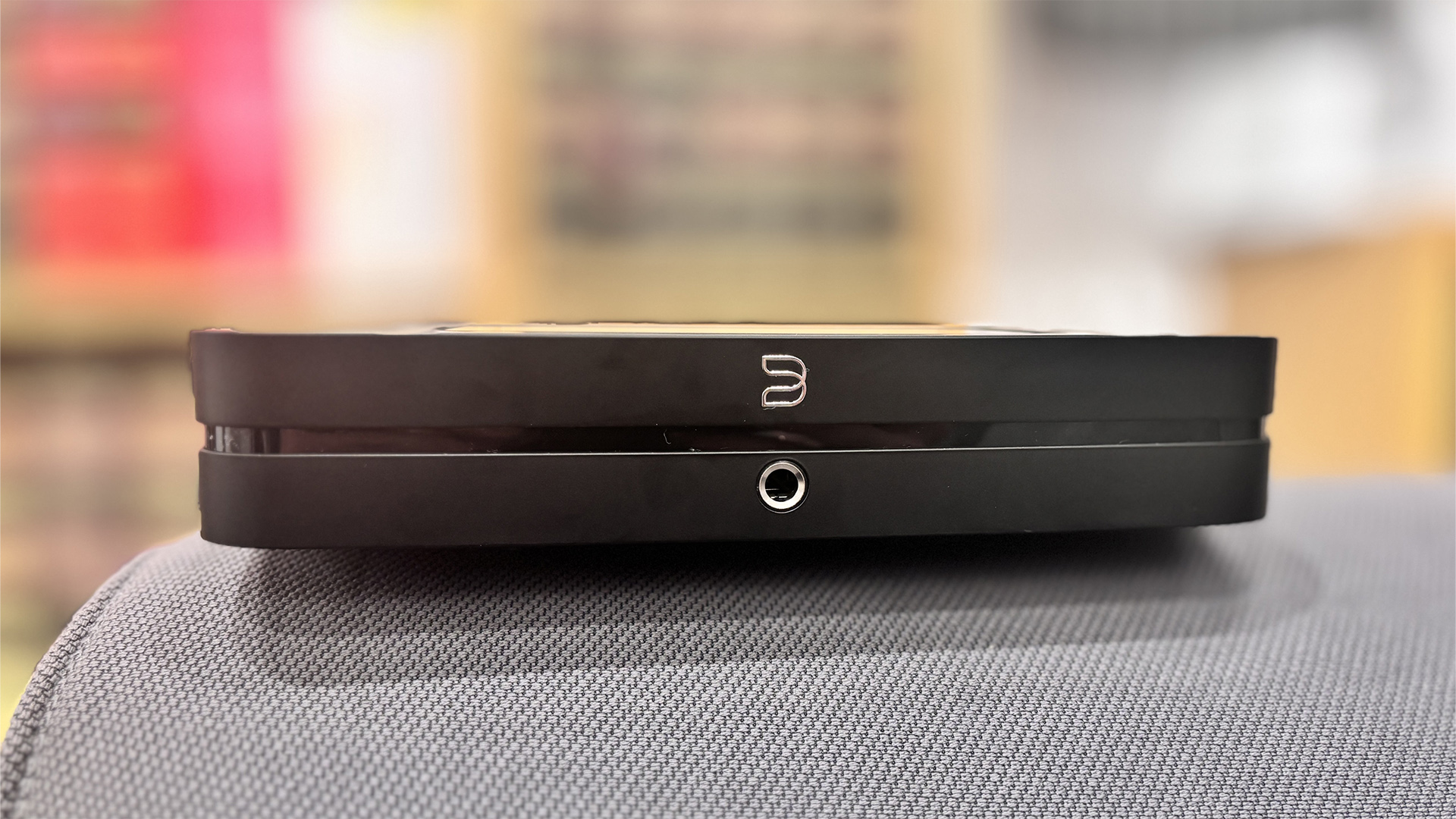
We plug the Bluesound Node (2024) into our reference system comprising the Award-winning Naim Nait XS 3 amplifier (£2199 / $299) and a pair of Epos ES-7N standmount speakers (£1890 / $2850). We understand that this is a budget music streamer designed to slot into a similarly affordable set-up, but our reference system is ideal for putting a spotlight on the streamer’s performance. Most users, however, will want to pair it with equally budget-friendly equipment. The Rotel A8 (£399 / $449 / AU$649) is a great place to start if you want an excellent entry-level amplifier, whereas the Wharfedale Diamond 12.1 (£249 / $399 / AU$699) or Dali Oberon 1 (£349 / $480 approx.) would make for ideal price-compatible standmounts.
We get the Node fired up, noticing immediately how much textural detail the dinky network player unearths as it bounces across the genres and tackles track after track. Here we have a clean, competent performer, bringing out the twangy, sun-soaked guitar and raw drawling vocals of Waxahatchee’s Right Back to It with a calm, reassuring sense of control. It’s easy to listen to the Node, and we certainly see its appeal as a network player that can journey around the genres and give almost any track a competent, undemanding performance.
Impressively well-organised, it’s a music streamer that gives the music a pleasantly relaxed feel thanks to its even-handed approach. From the ever-undulating piano loop to its performer’s aggressive, relentless lyrical flow, Eminem’s The Way I Am is a challenging record for any contender, but the Node is capable of knitting the pieces together in a way that feels cohesive and organised, preventing those elements from becoming entangled and keeping Mr Mathers’ bars skipping along nicely above the complex beat below. This is a track that overly keen rivals might cause to sound a little too harsh or brash – it’s Eminem, after all – yet we find no excessive harshness or untamed enthusiasm during our time with the Bluesound.
You’re probably expecting a ‘but’ at this point, and this is the moment when it arrives. Yes, there’s a lot to be said for the Node’s neat sonic approach, but rarely do we feel blown away by its talents or, perhaps more tellingly, overly compelled to uncover more tracks in a bid to see what the compact music streamer can do with them. There’s nothing actively offensive about our extensive test time, but the longer we listen, the more we feel a nagging sense of frustration that the Node is harbouring some blind spots.
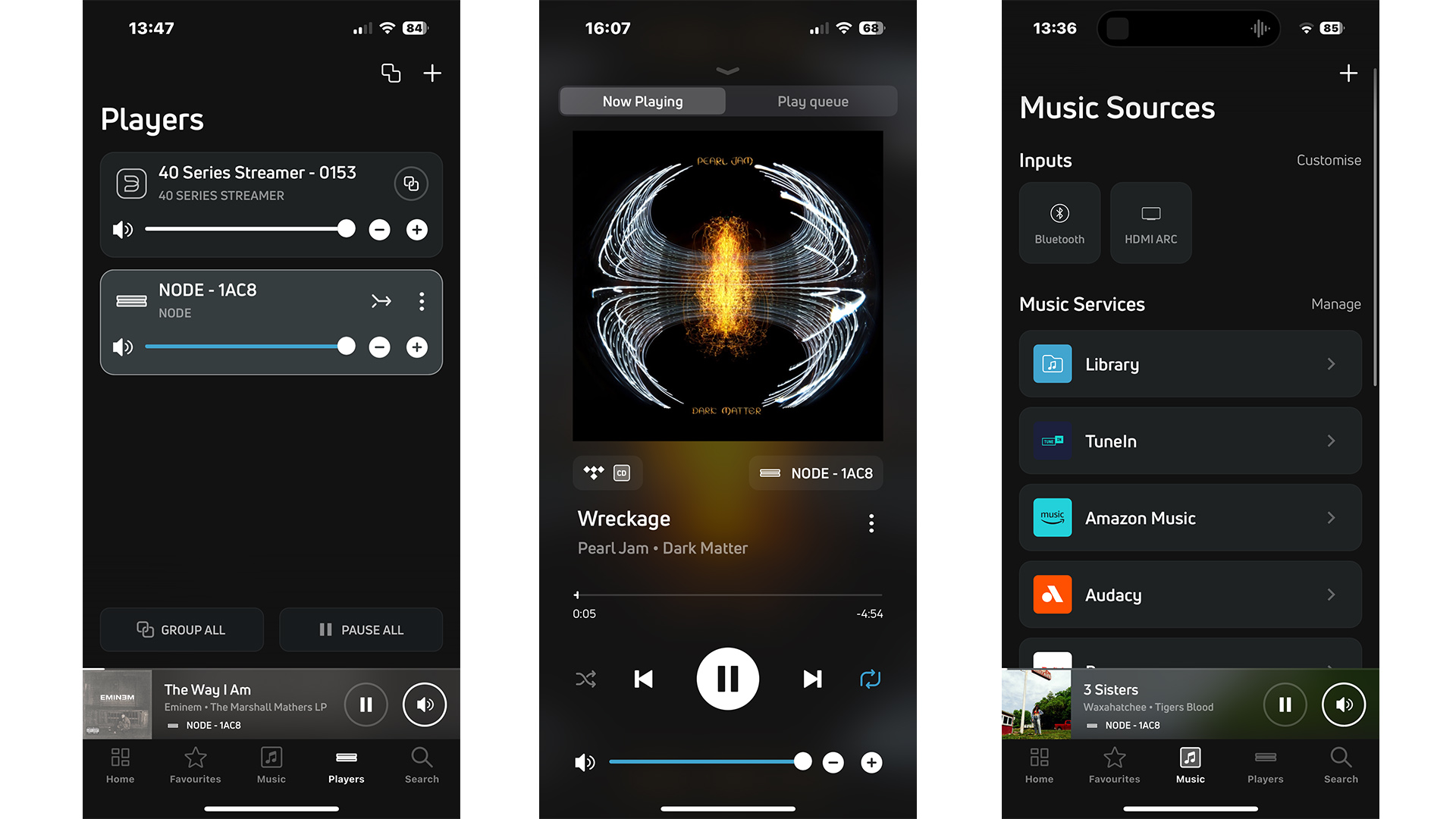
Neatly rendered as these tracks are, that non-commital approach could well be described less charitably as ‘restrained’, and all through our listening we’re aware of a product that seems reluctant to cut loose and truly get involved in the music being played. The rival MXN10 is exceptional at bringing out those diverging dynamic swings that are essential to an engaging, dramatic performance, contrasted with the Bluesound Node’s slightly stilted character that, while perfectly listenable, doesn’t have us marvelling at the thrills and spills of Hans Zimmer’s The Battle from Gladiator in the same way. Yes, The Way I Am is impressively organised, but we don’t quite feel that visceral punch in the face from Em’s rage at his critics or overzealous fans when listening through the neat but non-committal Node.
That play-it-safe attitude also extends to rhythms. George Benson’s Give Me The Night thrives on its rhythmic underpinnings, blending funky bass and percussive patterns to create a toe-tapping, head-bopping concoction which, through the right system, is impossible to resist. 2024’s Node does an able job of presenting the music’s textural details, yet it lacks the insight and agility to bring out those rhythmic flourishes in such a way as to stir the soul or cause the hips to shake – something which we envision, over time, might dampen your affections for the otherwise capable network player.
While the Node may not quite be a class-leading proposition when hooked up to a pair of speakers, it’s a composed and competent performer when charged with getting the most out of your headphones. Using the unit’s central 6.3mm headphone output, we plug in a pair of Røde NTH-100, discovering that the Node is capable of bringing out a capable sound from our budget Award winners as it adds some meaty bite to Smashing Pumpkins’ rocking Here Is No Why and plenty of scale to Justin Timberlake’s bombastic Mirrors.
Verdict
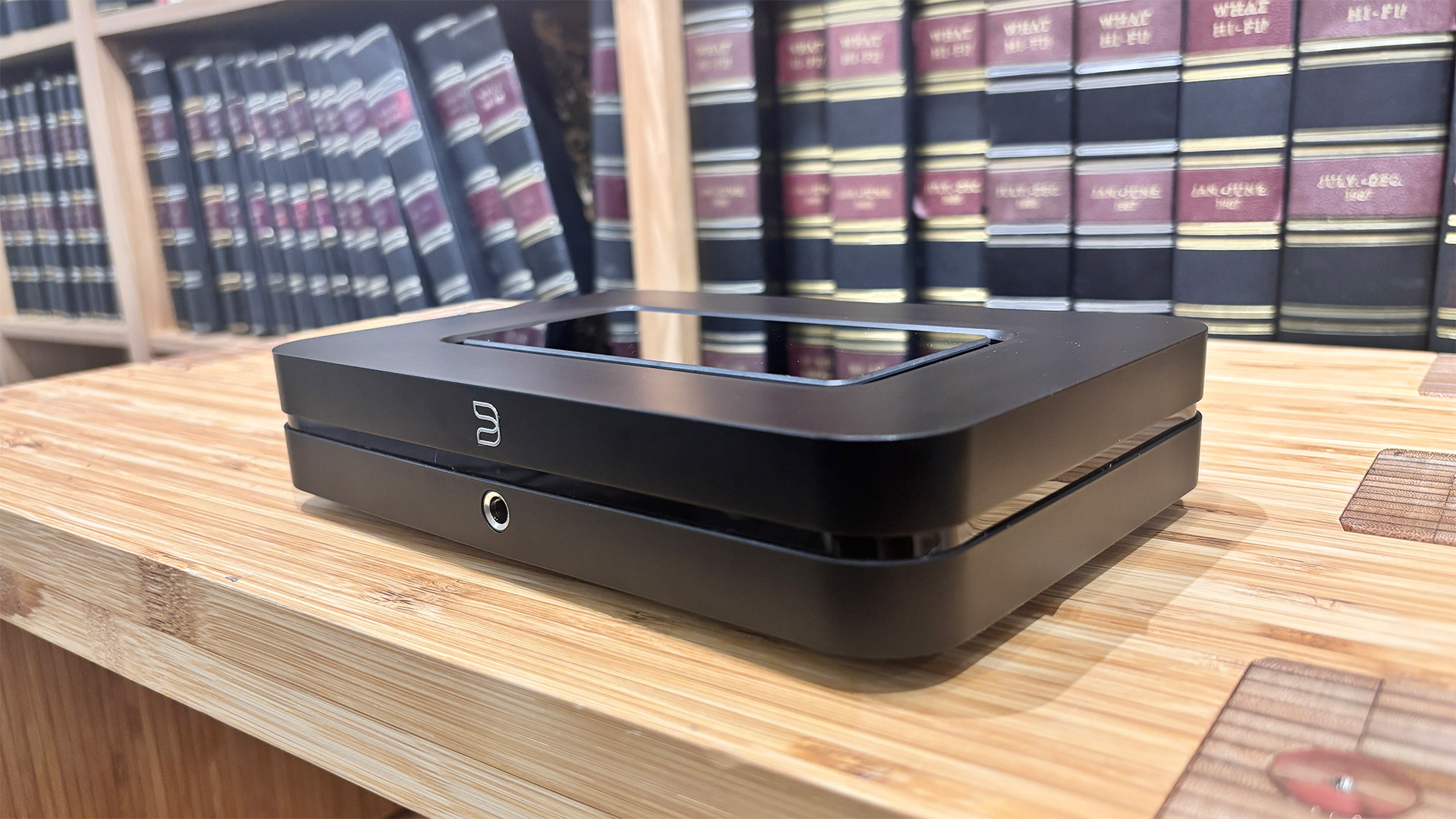
The Bluesound Node (2024) invokes its considerable pedigree to once again make for an affordably priced, feature-heavy network streamer, one that’s well-suited to listeners who like their music to sound clear, undemanding and admirably well-organised.
The problem for the Node comes in the shape of the Award-winning Cambridge Audio MXN10, an equally-priced rival that offers superior dynamic transparency and rhythmic insight. Still, while we prefer the captivating performance of the Cambridge, we can also understand the appeal of Bluesound’s compact, affordable box.
First reviewed: November 2024
SCORES
- Sound 4
- Build 5
- Features 5
MORE:
Read our review of the Cambridge Audio MXN10
Also consider the Audiolab 6000N Play
Best music streamers: top network audio players tested by our experts
What Hi-Fi?, founded in 1976, is the world's leading independent guide to buying and owning hi-fi and home entertainment products. Our comprehensive tests help you buy the very best for your money, with our advice sections giving you step-by-step information on how to get even more from your music and movies. Everything is tested by our dedicated team of in-house reviewers in our custom-built test rooms in London, Reading and Bath. Our coveted five-star rating and Awards are recognised all over the world as the ultimate seal of approval, so you can buy with absolute confidence.
-
Gray Never mind the threat from the CA MXN10, for many buyers (with no Apple requirement) the Wiim Ultra would be a preferred option - even if the Ultra wasn't £150 cheaper.Reply
Nice to see a full sized headphone socket on this though :) -
manicm ReplyGray said:Never mind the threat from the CA MXN10, for many buyers (with no Apple requirement) the Wiim Ultra would be a preferred option - even if the Ultra wasn't £150 cheaper.
Nice to see a full sized headphone socket on this though :)
Not so sure about this. The newest but cheapest Bluesound Nano has been getting very favourable reviews. And two reputable ones have suggested it sounds better than the Wiim Ultra.
This seems to be another anomaly in WHF's reviews, because while 99% of other reviews have trashed Sony's new Bravia 9 soundbar, WHF gave it a glowing one.
So I'm very cautious of this Bluesound review until I read others. -
mikemuch I'm curious as to why the reviewer thinks that a streamer is going to affect the rhythm of music. I also would have liked to hear comments about acoustic rather than electronically produced music.Reply
